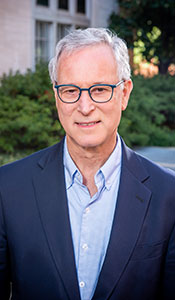In previous blogs, I’ve referred to the leading-edge work conducted in the UAB Medical Genomics Laboratory, directed by Ludwine Messiaen, Ph.D. Viewed in the medical and scientific communities as the gold standard for NF genetic testing, the laboratory has identified mutations in more than 8,000 unrelated NF1 patients and has identified more than 3,000 NF1 mutations. A recent UAB School of Medicine web site article highlights the groundbreaking work of Dr. Messiaen and her colleagues in determining correlations between specific NF1 mutations and symptoms of the disorder (http://www.uab.edu/medicine/news/latest/item/956-uab-researchers-work-to-unravel-the-complex-genetic-disease-neurofibromatosis-type-1). Using the database of more than 3,000 different NF1 mutations and a catalogue of phenotypes (symptoms) in NF1 patients, Dr. Messiaen led a team of 74 researchers and clinicians from 58 centers (from 24 U.S. states and 8 non-U.S. countries) in identifying only the third genotype/phenotype correlation ever found for NF1. The details of this and other recent investigations conducted by Dr. Messiaen’s team were published last year in the journals Human Mutation (http://www.ncbi.nlm.nih.gov/pubmed/26178382) and The American Journal of Human Genetics (http://www.ncbi.nlm.nih.gov/pubmed/26189818).
This finding is significant in giving patients and clinicians a better understanding of the expected course of the disease, including the symptoms that are likely to be most prominent, with a specific type of NF1 mutation. As we’ve discussed previously, there is broad clinical variability in the expression of NF among individual patients, and the course of the disease is often difficult to predict. This uncertainty can be anxiety-provoking and unsettling for families of children facing a diagnosis of NF1. Dr. Messiaen’s continued efforts in developing, utilizing and expanding the laboratory’s extensive mutation database to identify additional genotype/phenotype correlations will help to explain the causes of variability of expressions of NF and provide a greater degree of clarity and predictability for patients and clinicians about the expected course of the disease.
Our NF research program is continuing to accelerate the development of new animal models of NF mutations. Recently, we have been in discussions with various groups about developing models of individual mutations. Our goal remains to create models that allow us to test or develop new drugs that will restore function to the mutated gene or gene product. We will soon have completed our first mouse model preclinical trial of one new approach to therapy, and expect to launch others in the upcoming months.
I’d like to continue our discussion, featured in the previous few blogs, briefly reviewing specific NF features and symptoms clinicians may identify during a patient examination. When conducting an exam of the head, the most obvious NF-related feature is often the presence of neurofibromas, soft benign tumors that develop on or under the skin. These are not usually seen in young children but typically appear during adolescence and continue to develop throughout life. Because skin neurofibromas are harmless, the primary concern may be cosmetic in individuals who have a significant distribution of neurofibromas on the face and neck. In these cases, treatment involves removal of neurofibromas using either surgery or laser treatment.
Another tumor that can occur on the face is a plexiform neurofibroma, a type of tumor that involves multiple branches of small or large nerves. Some children with NF1 develop a plexiform neurofibroma behind an eye, which may show up as a swelling of the upper eyelid in the early years of life. These can grow rapidly in childhood and cause significant disfigurement and interference with vision. Approximately 2% to 3% of people with NF1 develop orbital plexiform neurofibromas. Treatment involves surgical removal when possible, although surgery is complex and challenging due to the location of these tumors and the involvement of cranial nerves. Because recurrence after surgical removal is common, close follow-up with an experienced NF clinician as well as an ophthalmologist and plastic surgeon is important.
In some cases, distinctive facial features may be present in people with NF. An example of a feature that may be noted by a clinician is palpebral fissures – the longitudinal opening between the eyelids – which slant downward from the midline to the lateral area. While many people with NF share this feature, it doesn’t appear in everyone with NF. There also may be slight drooping of the upper eyelids. Other NF features on the head include scalp neurofibromas, which can become painful and sometimes bleed, usually in adults. Also, some people with NF retain a soft spot on the head, usually behind the left ear, that doesn’t completely close during the normal process of skull bone fusion that begins in early childhood. While this feature is uncommon, it may be noted by an experienced clinician during an examination. It is a benign feature that usually does not require treatment.
Director's Blog
New Discoveries in the UAB Medical Genomics Laboratory, Animal Model Progress, and NF-Related Features of the Head
- Details
- Written by: Bruce Korf
